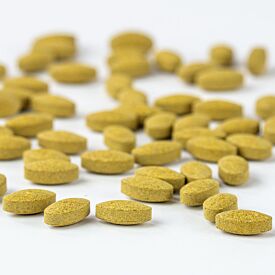Spring for Vata-Kapha & Kapha-Vata

Because the spring is generally balancing for vata, you will most likely want to tailor your routine to be a bit more kapha-balancing than vata-balancing. That said, you will want to take full advantage of the soft, moist, nurturing nature of the spring season to calm and rejuvenate vata.
You’ll also need to be careful that your efforts to balance kapha don’t inadvertently aggravate vata.
You can, of course, adapt your habits as your climate or your personal needs change. The following modifications to a typical springtime routine are designed specifically to support your constitution.
If you are not familiar with the basic tenets of a traditional springtime routine, you might benefit from first reading Banyan's more general Ayurvedic Guide to Spring.
You may also find it helpful to read both the vata and kapha recommendations for suggestions on how to support each of your primary doshas independently.
Foods to Favor
Ultimately, you’re looking for a balance between the oily, nutrient-rich foods that calm vata, and the light, dry fare that will cleanse and refresh your system this spring.
- Consider eating kapha-balancing foods that are prepared in a vata-balancing manner.
- Enjoy lots of fresh fruits and vegetables, but favor cooked over raw choices whenever possible,
- Garnish veggies with ghee or oil, and eat them warm rather than cold.
- Make the transition from a winter to spring diet very gradually—following the lead of your local climate.
- Spring foods that will generally support both vata and kapha include apricots, berries, cherries, peaches, soaked prunes, soaked raisins, asparagus, beets, cooked carrots, chilies, green beans, leeks, mustard greens, onions, and cooked spinach.
- Also consider amaranth, quinoa, basmati rice, miso, mung beans, pumpkin seeds, sunflower seeds, cottage cheese, goat’s milk, egg whites, shrimp, ghee, mustard oil, sunflower oil, and honey.
Acceptable Seasonal Indulgences
The spring is a time of year when lighter, drier, vata-provoking foods may be less aggravating. Though it will be best to prepare most of your meals in a vata-balancing way, this is an ideal time to enjoy a salad or a raw vegetable snack, on occasion.
Eat these treats at mid-day with an oily dressing and some pungent spices, like black pepper or hingvastak. Green or black tea with a little honey might also suit you this spring, and on especially damp and heavy days, you might even get away with enjoying a cup of coffee or espresso.
If you’re craving something sweet, try a fruit-based treat like baked apples or fruit crumble.
Foods to Minimize
- Avoid iced drinks, cold or frozen foods, and leftovers because the cold quality aggravates both vata and kapha.
- Other foods that aggravate both of your primary doshas—like watermelon, white sugar, spelt, soybeans, soy flour, and pork—are also best reduced or avoided.
- Keep tabs on your digestion and watch for signs of excess kapha (heaviness, lethargy, brain fog), and signs of excess vata (gas, bloating, anxious feelings), and adapt your diet accordingly.
Lifestyle Adjustments
As a vata-kapha or kapha-vata type, you’ll want to balance predictability with spontaneity, relaxation with stimulation, and quiet stillness with active engagement this spring. Try to balance these forces in your relationships, work habits, exercise routines, and in your state of mind.
While the general spring recommendations are focused on balancing kapha, you may benefit from shifting to a more vata-balancing lifestyle at different times.
An awareness of the qualities expressing in your local climate and of any fluctuations in your internal state of balance can help to determine when this will be most supportive. If you're unsure, take the dosha quiz to find your current state of balance.
When focusing on kapha:
If the weather is cool, wet, cloudy, or heavy, and if you find yourself feeling sluggish, weighed down, or lacking motivation, favor a more kapha-balancing lifestyle. Wake up early, get plenty of exercise, and stay motivated with clear, inspiring goals.
When focusing on vata:
If the weather is cold, dry, or windy, and if you’re feeling overstimulated or depleted, try shifting to a more vata-balancing lifestyle for a few days until you begin to feel more stable and calm. Enjoy gentle, grounding movement, practice self-massage, and make sure to get plenty of rest.






